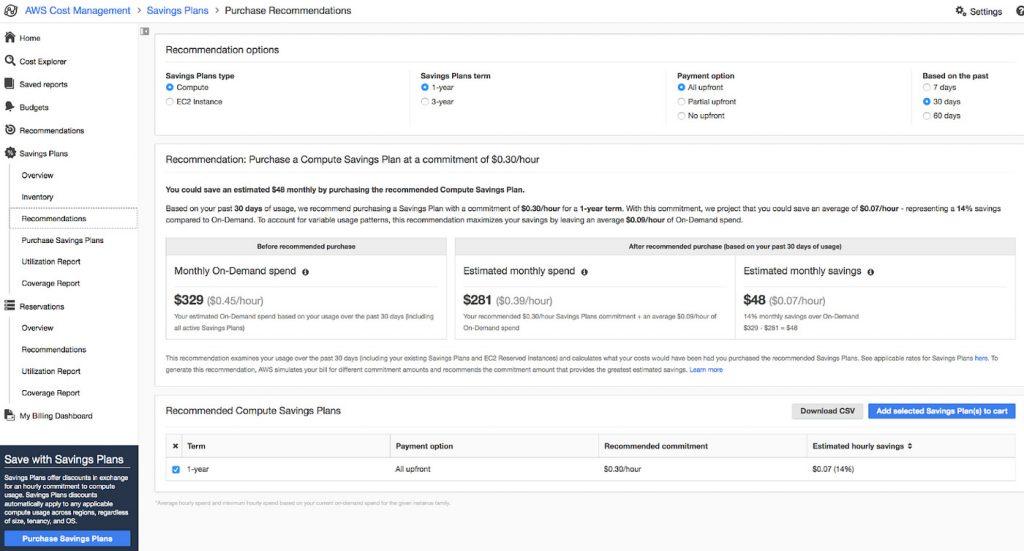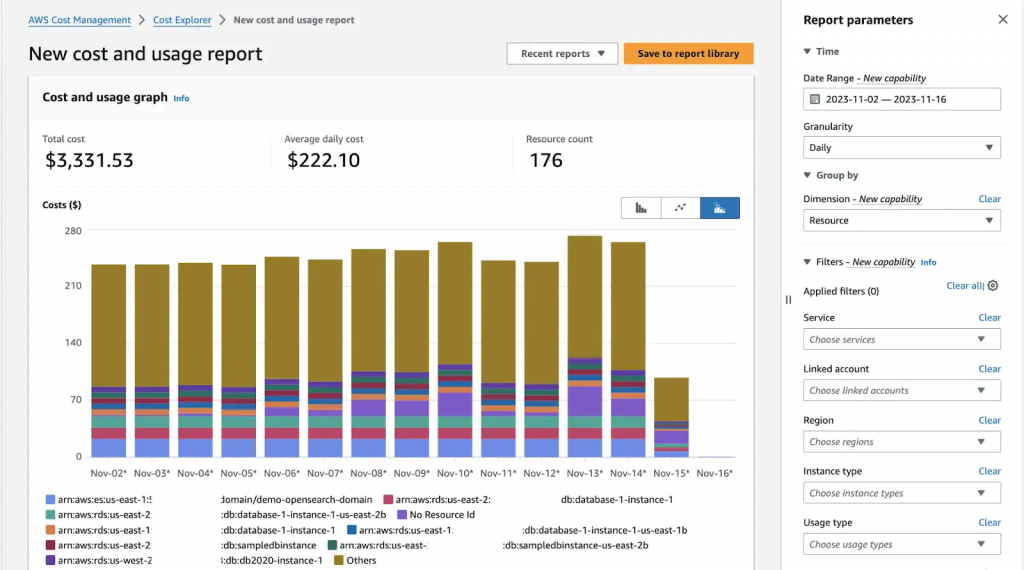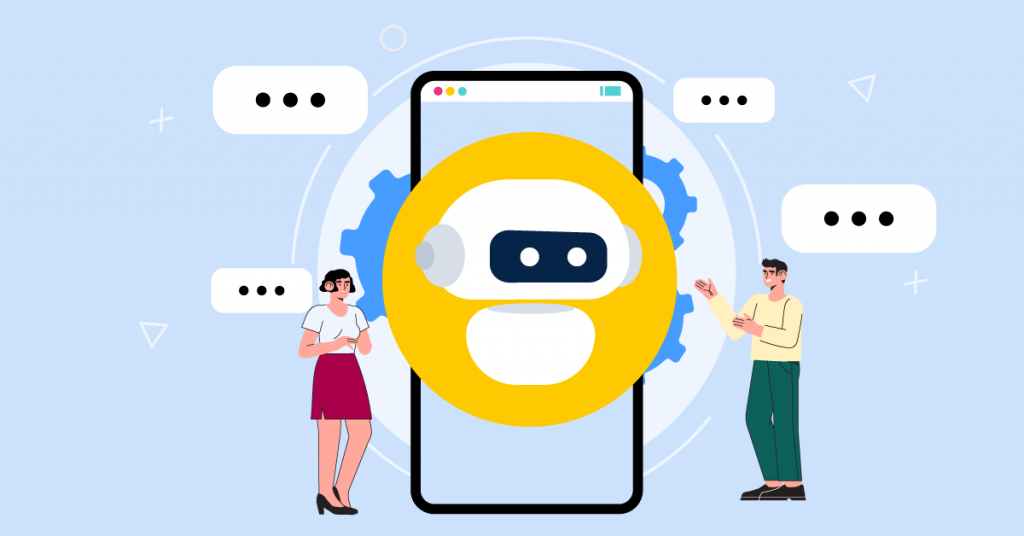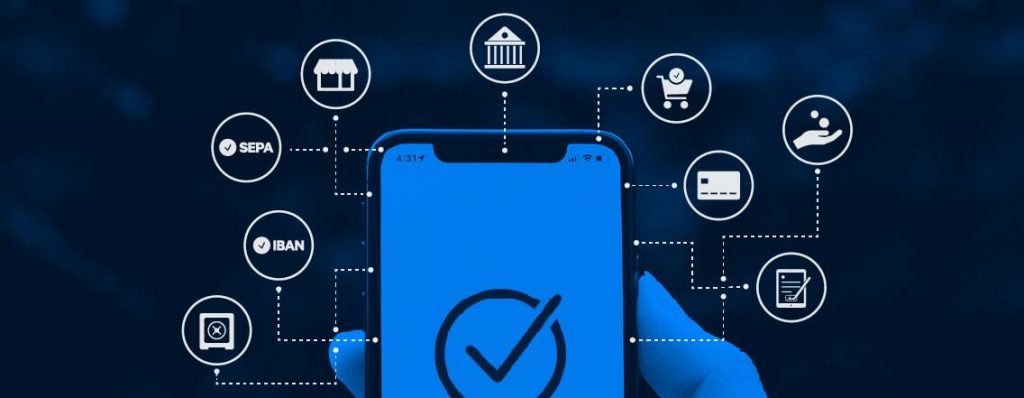
Günümüzde yapay zeka, birçok farklı sektörde iş yapma biçimini değiştiren sıcak bir konudur. Ancak ChatGPT gibi yapay zeka botlarının yeniliği ve dikkat çekici doğruluğu, yapay zekanın insan yaşamında ve birçok sektörde zaten ne kadar büyük bir parça olduğunu gizlemiş olabilmektedir.
Halihazırda, bankacılıktaki yapay zekanın iş değeri, dünya çapında 150 milyar doların üzerindedir ve tahminler 2030 yılına kadar bu değerin iki katına çıkacağını öne sürmektedir.
Bu yazı, yapay zekanın insan hayatını nasıl daha kolay hale getirdiğini ve bankacılık sektörünün yapay zekayı süreçlerine dahil ederken karşılaşacağı zorlukları anlatmaktadır. Bu, bankacılığı daha güvenli, daha verimli ve daha güvenli hale getirmek içindir.
Yapay Zekanın Bankacılıkta Kullanıldığı En İyi 5 Yol
- Dolandırıcılık Tespiti ve Önlenmesi
Müşteriler, bankalardan satın alma onayı isteyen çağrıları sık sık almaktadırlar. Dolandırıcılık şüphesiyle yapılan bu aramalarda müşteriler, temsilcilerine satın almanın kendisi tarafından yapıldığını belirtmiş veya gerçek bir dolandırıcılıkla karşı karşıya kalmışlardır. Her iki durumda da, bu satın almanın tespit edilme şekli, milyonlarca işlemi saniyede tarayan ve müşterilerin kişisel satın alma profilini belirleyen yapay zeka sayesinde gerçekleşmiştir. Yapay zeka, satın almalardaki kalıpları tespit edebilmekte ve herhangi bir satın alma için dolandırıcılık olasılığını öne sürebilmektedir. Bu, bankanın bir hesapla yapılan satın almayı yüksek dolandırıcılık olasılığı taşıması durumunda gerçek zamanlı olarak geçersiz kılabileceği anlamına gelmektedir.
- Müşteri Hizmetleri ve Destek
Yapay zeka, insanların kullandığı dili taklit etme ve çoğaltma konusunda hızla daha iyi hale gelmekte ve tüm insanların kolayca anlayabileceği bir dil kullanmaktadır. Bu, sohbet botları ve destek hizmetlerinin sundukları hizmeti, dijital hizmetle daha fazla tamamlayabileceği anlamına gelir. Dijital müşteri hizmetlerinin yüz yüze hizmet kadar iyi olmasının avantajları açıktır: Yapay zeka, herhangi bir soruyu konum fark etmeksizin 7/24 yanıtlayabilmektedir. Ayrıca, yapay zekanın oluşturabileceği müşteri profilleri, bankaların hangi hizmetlerin hangi müşteriler için en uygun olduğunu hemen belirlemesine yardımcı olabilmekte, işe alım sürecini büyük ölçüde iyileştirebilmektedir.
- Risk Yönetimi ve Kredi Skorlaması
Yapay zekanın milyonlarca veri noktasını saniyeler içinde analiz edebilmesi her zaman herhangi bir süreci hızlandıracaktır. Yapay zeka, müşterilerin krediye uygun olup olmadığını anında belirleyebilmektedir ve her bir müşterinin profiline ve geçmişine dayalı maksimum borçlanma sınırlarını belirlemek için çeşitli algoritmalar kullanabilmektedir. Bu, yapılan hataların riskini azaltmakta ve yavaş hareket eden bürokratik bir süreçle ilgili dönüşüm ve hayal kırıklığını imkansız kılacak kadar süreci hızlandırmaktadır. Ayrıca yapay zeka, piyasa trendlerini gerçek zamanlı olarak takip edebilmektedir. Böylece, güncel olmayan bilgilere dayalı kararlar almamaktadır - bu, bir hafta önceki bilgilerin genellikle güncel olmadığı bir alanda gereklidir.
- Ticaret ve Yatırım Yönetimi
Yapay zekanın milyonlarca veri noktasını bir araya getirme ve etkili bir şekilde analiz etme yeteneği, ticaretin yapılma şeklini değiştirmiştir. Bankaların her mikro saniyede ticaret yaparak, birçok yatırımcının gelişmiş yapay zekaya erişiminin olmamasından yararlanarak para kazanabilmesinin yolu olan "uüksek frekanslı ticaret"(high-frequency trading)te algoritmaların risk değerlendirme seviyelerini ayarlayabileceği ve ticaretlerinin piyasadaki dalgalanmaları en etkili şekilde yakalayacağından emin olabileceği anlamına gelmektedir. Ayrıca, "robo-danışmanlar", kullanıcının bireysel risk konfor seviyelerine ve hedeflerine dayalı olarak bir yatırımcının portföyünü kişisel düzeyde yönetebilmektedir. Yatırım stratejileri, kullanıcıların yüksek risk/yüksek ödül senaryolarını tercih edip etmemelerine veya istikrara ve uzun vadeli büyümeye odaklanmalarına bağlı olarak anında değiştirilebilmektedir.
- Kara Para Aklamayı Önleme (AML) ve Müşterini Tanı (KYC)
Her bankanın katı Anti-money Laundering (AML) ve Know Your Customer (KYC) uyum düzenlemeleri vardır. Yapay zeka, müşterilerin mülkiyeti gizleme girişimlerini taramayı ve geniş veri miktarına erişimi olan tahmin algoritmaları aracılığıyla ve insan hatasına düşme ihtimali olmadan Ultimate Beneficial Ownerships’lere odaklanmayı sağlamaktadır. Kredi kararlarında olduğu gibi; yapay zeka, bir profildeki tüm verileri anında analiz ederek karar vermekle birlikte, büyük miktardaki işlemleri izleyerek bunları daha geniş bir finansal resme yerleştirmektedir. Bu, bankaların her bir müşterisini bireysel düzeyde daha spesifik bir anlayışa sahip olmasına ve riskli veya yasa dışı faaliyetlere açık olmalarını önlemesine katkı sağlamaktadır.
Yapay Zekanın Bankacılıktaki Geleceği
Bankacılık işlemlerinde yapay zekanın kullanılması, bilimsel bir gerçektir. Yapay zeka, dünyada ve işlemlerin gerçekleştirilme şeklinde temel bir teknoloji işlevi görmektedir ve gelecekte bankacılıkta daha da büyük bir rol oynayacağı tahmin edilmektedir. Yapay zekanın gelecekte bankacılığı halihazırda olduğundan daha fazla devrim yaratabileceği beş yol şunlardır:
- Blok Zinciri Tabanlı Bankacılık
Blok zinciri teknolojisinin hem şu anda hem de gelecekteki birincil faydası, peer-to-peer güvenli formatı ve tüm işlemlerin tam, merkezi olmayan kaydı ile üçüncü taraflara olan ihtiyacı ortadan kaldırmasıdır. Bankacılık sektörü; güvenlik, ‘Guarantee trust’ ve temel bürokratik görevler için üçüncü taraflara büyük ölçüde bağlı olan bir sektör hüviyeti taşımaktadır. Blok zinciri teknolojisi, üçüncü tarafların kullanıldığı her durumda maliyetleri azaltabilmektedir. Örneğin, Bankalararası Finansal Telekomünikasyon Derneği (SWIFT), bankalar arasındaki küresel işlemlerin gerçekleştirildiği ana araçtır. Borç verenler, blok zinciri aracılığıyla doğrudan birbirlerine bağlandığında, işlemler daha ucuz ve daha verimli olabilmektedir. Ayrıca, SWIFT son yıllarda birkaç kez hacklendiği için bu blok zinciri teknolojisi daha güvenli olacaktır ve otomatikleştirilmiş hizmetlerin insan hatası riskini azaltması avantajına sahiptir.
Blok zinciri teknolojisinin bankacılıkta potansiyel bir başka uygulaması, dijital para biriminin tanıtılmasıdır: hard currency’lerin dijital paraya dönüştürülmesidir. Halihazırda Çin, bu konuda deneyler yapmakta ve bitcoin'in fiziksel paranın yerini alacağı değil, onu tamamlayacağı düşüncesi, dijital para biriminin potansiyelini anlamada yanlış bir anlayış olabileceği düşüncesi mevcuttur.
- Duygu Tespiti
İnsanın her zaman rasyonel davranacağını öne süren klasik ekonomi teorisinin yanlış olduğu ve irrasyonel duyguların tahmin edilenden daha büyük bir rol oynadığı kanıtlanmıştır. Duygu tanıma yazılımı, bankaların sadakat oluşturmasına ve dolandırıcılık tespitinde yardımcı olmasına potansiyel sağlamaktadır. Genellikle, müşterilerin söyledikleri duyguları ile gerçek duyguları aynı değildir. Bununla birlikte psikolojik araştırmalar, genellikle hisssedildiği düşünüldüğü şeyin gerçek duygular olmadığını göstermektedir. Duygu tanıma teknolojisi, müşterilerin düşündüklerinin altına inerek gerçek duygusal bağlantıyı kurmayı ve ayrıca "yakalanma korkusu" gibi gizlenmek istenen duyguları analiz etmeyi sağlamaktadır.
Elbette, duygu tanıma yazılımı, geleneksel tahmine dayalı yapay zeka ile birlikte kullanıldığında, hem müşterilerle nasıl bağlantı kurulacağını hem de dolandırıcılığın nasıl tespit edileceğini optimize edebilmektedir. Teknoloji henüz hatasız bir durumda olmasa da bankaların karar vermelerine yardımcı olacaktır.
- Biyometrik Kimlik Doğrulama
Şifreler ve PIN'lerin güvenlik riskleri olduğu bilinmektedir. Yüz tanıma, ses tanıma ve parmak izi tarama gibi biyometrik kimlik doğrulama yöntemleri doğal olarak çok daha güvenlidir ve hızlı ve güvenli bir şekilde kullanılabilmesi için gelişmiş yapay zekaya ihtiyaç duyar. Bu durum, KYC (Müşterini Tanı) ve AML (Kara Para Aklama ile Mücadele) süreçlerini de etkiler, böylece bir kişinin kimliğini anında doğrulayabilmektedir, büyük belgeleri gözden geçirmeye gerek kalmadan işlem yapılabilmektedir. Teorik olarak, biyometrik kimlik doğrulama kredi kartlarının veya ödemenin tamamen sona ermesi anlamına gelebilmektedir.
- Sesli Bankacılık
Amerika Birleşik Devletleri'ndeki müşteriler, hayatlarını kolaylaştırmak için sesli asistanları kullanmaya giderek daha fazla alışmışlardır ve ABD’nin 'ından fazlası düzenli olarak bu asistanları kullanmaktadır:
Tüm biyometrik kimlik doğrulama yöntemlerinde olduğu gibi, ses tanıma yazılımı da şifreler veya PIN'lerden daha güvenlidir ve müşterilerin istedikleri işlemleri ve eylemleri bir web sitesinde işlem aramak zorunda kalmadan veya fiziksel bir bankacıya açıklamak için bankaya gitmeden gerçekleştirmelerini sağlamaktadır. Ses tanıma yazılımı, duygu tanıma yazılımıyla birleştirildiğinde, bir müşterinin öfkeli, hayal kırıklığına uğramış veya endişeli olduğunu tespit edebilmekte ve duygusal durumlarına dayalı olarak onlara farklı yanıtlar ve eylemler sunarak genel müşteri deneyimini iyileştirmektedir.
- Kuantum Hesaplama
Kuantum Hesaplama, temelde bilgisayarların daha büyük ve daha karmaşık veri miktarlarını, küçük veri yüklerini ele aldıkları kadar verimli ve hızlı bir şekilde doğru bir şekilde işleyebilme yeteneğidir. Bankacılık sektörü; yüksek frekanslı ticaret, gerçek zamanlı dolandırıcılık tespiti ve risk analizi gibi konularda hızın çok önemli olduğu bir sektördür. Devasa ve genellikle çelişkili bilgi setlerini işlemek bankacılık sektöründe son derece yüksek riskler taşır ve kuantum bilgisayarlarının bu bilgileri modern bilgisayarlar veya insanların yapabileceğinden daha yüksek bir seviyede işleyebilme yeteneği, bir bankanın kâr hanesi ve müşterilerinin güvenliği için açıkça faydalar sağlamaktadır.
Bankacılıkta Yapay Zeka Kullanımıyla Aşılması Gereken Engeller
Yapay zekanın halihazırda nasıl kullanıldığı ve gelecekte nasıl kullanılabileceği konusunda oldukça olumlu bir tablo çizilse de aşılması gereken son derece önemli engeller de bulunmaktadır. Yapay zeka teknolojisi henüz çok yenidir ve yaratabileceği tüm potansiyel sorunları bilinmese de bu teknolojinin tuzaklarına yönelik önemli miktarda araştırma yapılmıştır. Bunların hiçbiri üstesinden gelemeyeceğimiz veya hafifletemeyeceğimiz şeyler değildir, ancak hem bankaların hem de programcıların yapay zeka kullanımında ilerlerken farkında olması gereken durumlardır.
- Önyargı
Bu, yapay zekanın en büyük sorunu ya da en azından potansiyel sorunudur. İnsanlar tarihsel olarak belirli gruplara ve azınlıklara karşı önyargılı oldukları için, bu tarihsel veriler, "öğrenen" makineler tarafından bile, ayrımcı uygulamaların iş yapmanın optimize edilmiş yolu olduğunu benimseyerek pekiştirilmektedir. Örneğin, Ulusal Ekonomik Araştırma Bürosu tarafından 2019 yılında yapılan bir çalışma, yaygın olarak kullanılan bir kredi skorlama algoritmasının, benzer finansal profillere sahip siyah başvuru sahiplerine, beyaz başvuru sahiplerine göre iki kat daha fazla kredi reddetme olasılığı olduğunu ortaya koymuştur. Algoritmalarda önyargı riskini azaltmanın yolları vardır, ancak bu, tarihsel verilere dayanan herhangi bir yapay zeka için büyük bir sorundur; çünkü verinin kendisi zaten önyargılı ve bozulmuş durumdadır.
- Şeffaflık Eksikliği
Bu yazıda, yapay zekanın devasa miktarda veriyi nasıl işlediğini ve kuantum bilişimin daha karmaşık ve büyük verileri işleyebilme vaadi açıklanmıştır. Meslekten olmayan bir kişiye bir kredinin neden reddedildiğini veya yapabilecekleri işlemlerde neden sınırlamalar olduğunu açıklamak, algoritmayı izleyen insanların kendileri bile bunu tam olarak anlamadığında son derece zor olabilir. Ayrıca, yapay zeka tabanlı bir kararda hataların meydana geldiği nadir durumlarda, bir algoritmanın karar verme yöntemi zaten insan zihninin anlayamayacağı kadar opaksa, hatanın nereden kaynaklandığını belirlemek zor olabilir.
- Siber Güvenlik Riskleri
Teknolojinin bankacılığı insan kontrolüne kıyasla nasıl daha güvenli hale getirdiğine dair çeşitli yollar olsa da her şey yapay zeka sistemlerine dayandığında siber saldırıların riski de doğal olarak artmaktadır. Yapay zeka sistemleri, tanımı gereği büyük miktarda verinin tek bir yerde bulunması anlamına gelmektedir. Bu nedenle, müşteri verileri ve bankacılık bilgileri dahil olmak üzere tüm bu verilere erişmek isteyen bilgisayar korsanları için son derece çekici bir konumdadır. Güçlü siber güvenlik protokolleri, bu tür saldırıları önlemek için yeterli olmalıdır, ancak güvenliğin odak noktası olması ve saldırıların imkansız olduğundan emin olmak için sürekli güncellenmesi gerekmektedir.
- İşsizlik
Yapay zeka daha önce insanlar tarafından gerçekleştirilen işlerin yerini aldığından, yeni teknoloji her zaman fazlalığa yol açmaktadır. Bu durum hem bireysel düzeyde banka çalışanlarını hem de daha geniş anlamda ekonomiyi etkileyebilir. Ancak, yeni teknoloji genellikle yeni işlerin ortaya çıkması anlamına gelir, bu yüzden çeşitli işler geçersiz hale gelirken ve yenileri ortaya çıkarken teknolojinin istikrarı bozucu bir özelliği olsa da, artan verimlilik ve ekonomiyi genel olarak iyileştirme yeteneği, insanların başka şekillerde tatmin edici yaşamlar kurmak için daha fazla fırsata sahip oldukları anlamına gelecektir.
- Müşteri Güveni
İnsanlar teknolojiye karşı oldukça temkinlidir. Sezgisel olarak, insanlar makinelerden daha fazla insana güvenmekte ve bir makinenin onlara ne yapabileceklerini ve ne yapamayacaklarını söylemesine pek güvenmemektedirler. Bu, üstesinden gelinemeyecek bir durum olmaktan ziyade “insanların alışkanlarıyla” ilişkilidir. Ancak yine de, yapay zekanın birçok faydasını kullanan bankalara müşterileri kazandırmak zor olabilir.
Anahtar Çıkarımlar
Yapay zekanın bankacılıkta kalıcı olduğu açıktır. Şifrelerin, parasal bilgilerin ve hatta kimliklerin dijital olarak çalınmasının giderek arttığı bir dönemde bile, bu bilgilerin daha güvenli şekilde korunmasını sağlayacak çeşitli yollar bilinmektedir. Yapay zekanın dolandırıcılığı yakalamaya ve fonlarımızı korumaya yardımcı olma yeteneği, insanoğlunun farkında olduğu bir şeydir. Ancak gelecek, fark edildiğinden daha da heyecan verici olabiliyor ve blockchain ya da duygu tanıma yazılımı gibi teknolojiler, bankacılıkta yeni bir devrim yaratmanın işareti niteliğindedir. Yine de, geleceği bu kadar parlak olmasına rağmen, yapay zeka teknolojisinin henüz tamamen çözülememiş olan büyük önyargı ve hata sorunları dahil, aşılması gereken bir dizi engel olduğu bilinmelidir. Bankacılık sektörü, koruduğu verilerin önemi nedeniyle daha muhafazakar bir sektör olma eğilimindedir, bu nedenle ilerlerken bile müşterilerini ve müşterilerin değerli verilerini korumak için oldukça dikkatle ilerlemektedir.




